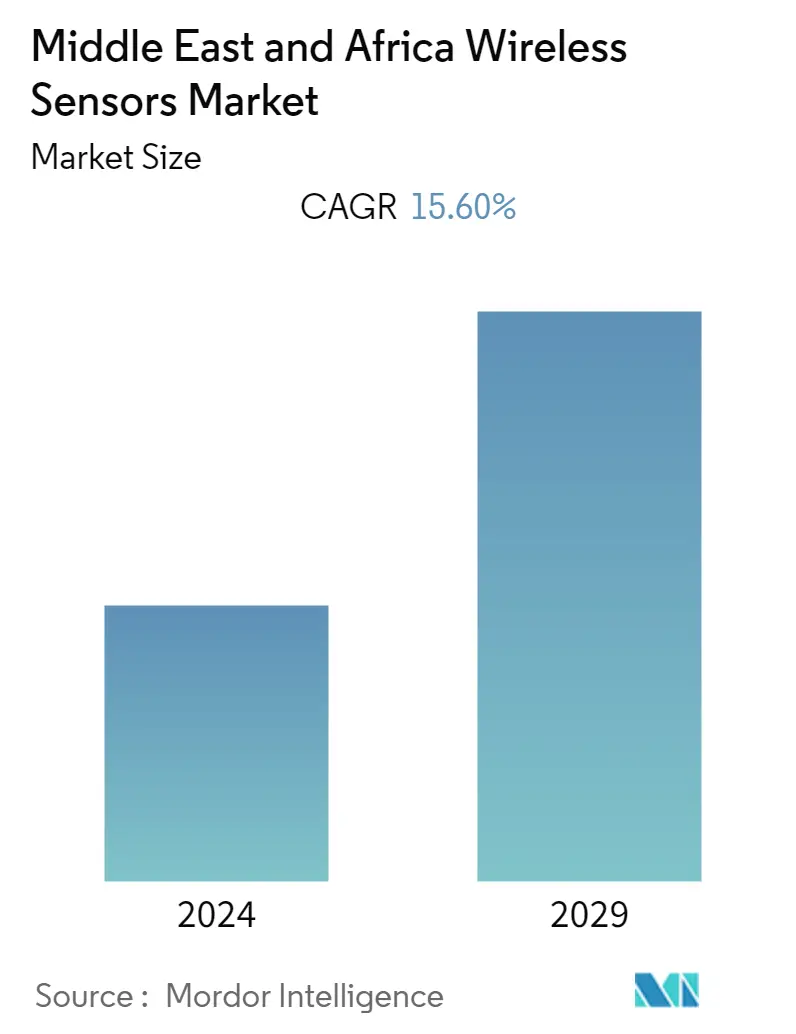Market Size of Middle East and Africa Wireless Sensors Industry

| Study Period | 2019 - 2029 |
| Base Year For Estimation | 2023 |
| Forecast Data Period | 2024 - 2029 |
| Historical Data Period | 2019 - 2022 |
| CAGR | 15.60 % |
| Market Concentration | Medium |
Major Players
*Disclaimer: Major Players sorted in no particular order |
Need a report that reflects how COVID-19 has impacted this market and its growth?
MEA Sensors Market Analysis
The Middle East and African wireless sensor market are expected to register a CAGR of 15.6% during the forecast period (2021 - 2026). The growth in Industry 4.0 with the COVID-19 pandemic on the global scale has been acting as a catalyst that pushed the development of intelligent wireless sensors that help improve energy consumption with a high level of efficiency in the region. The growing range of pressure applications in industries contributes to developing single devices that can handle a range of pressures. Such devices are set to simplify product designs, accelerate time to market and reduce sensory inventory costs of industrial manufacturers.
- Africa is undergoing a technology boom, owing to the government's emphasis on telecommunications and the Chinese investment in the region, especially in emerging technologies. With the region's economy expected to be driven by South Africa, Kenya, and Morocco, consumer spending is also expected to increase further.
- Automotive and healthcare production substantiates the region's demand for wireless sensors. The area lacks the local production of aerospace and military equipment and other industrial control systems.
- According to Federal Ministry for Economic Affairs and Energy, around 1 million sensors are estimated to be the total demand for the Middle East region. Although there are no significant wireless sensor manufacturers in the region, such statistics indicate the scope for global manufacturers.
- The increasing military spending across the Middle East paves the way for technologies like drones/unmanned aerial vehicles (UAVs). In addition, the usage of wireless sensors in traditional fighter jets with high-end navigation systems is increasing significantly. The factors mentioned above are creating an exponential demand for wireless sensors in volumes as well.
- Additionally, the healthcare sector has witnessed a rise in wireless sensors, as these are helping care teams monitor patients in real-time. Wireless pushbuttons are serving as PERS devices in different senior care facilities. Humidity sensors are helping hospital facility managers to maintain healthy environmental conditions for patients.
- Moreover, wireless networks have many advantages, as they are easy to add or even easy to modify. If the room function or layout changes, it is possible to quickly reposition these sensors to get a stronger signal. For instance, they can be used for a modular retail or office space, with partition walls that change depending on use, or a temporary installation in a rented building.
